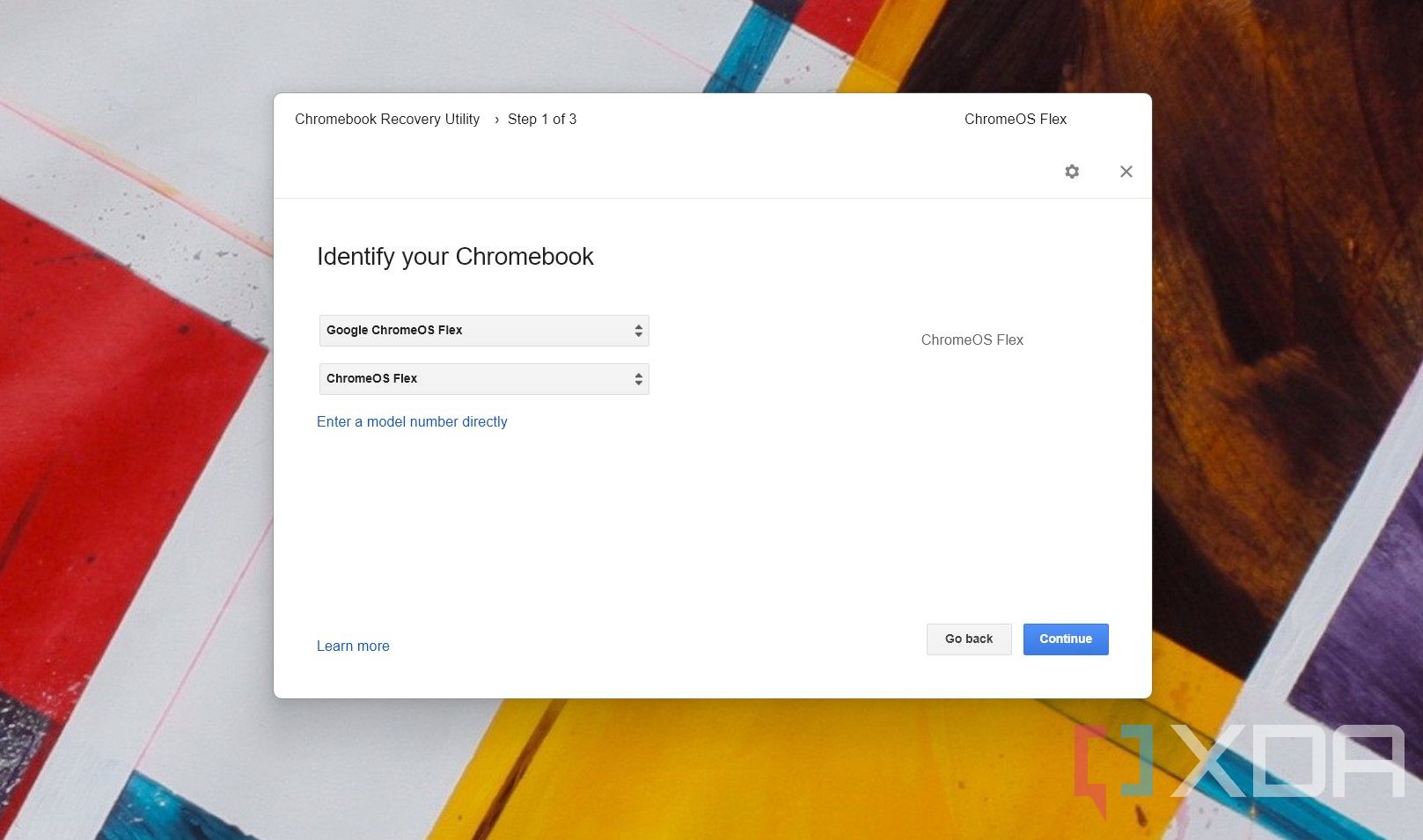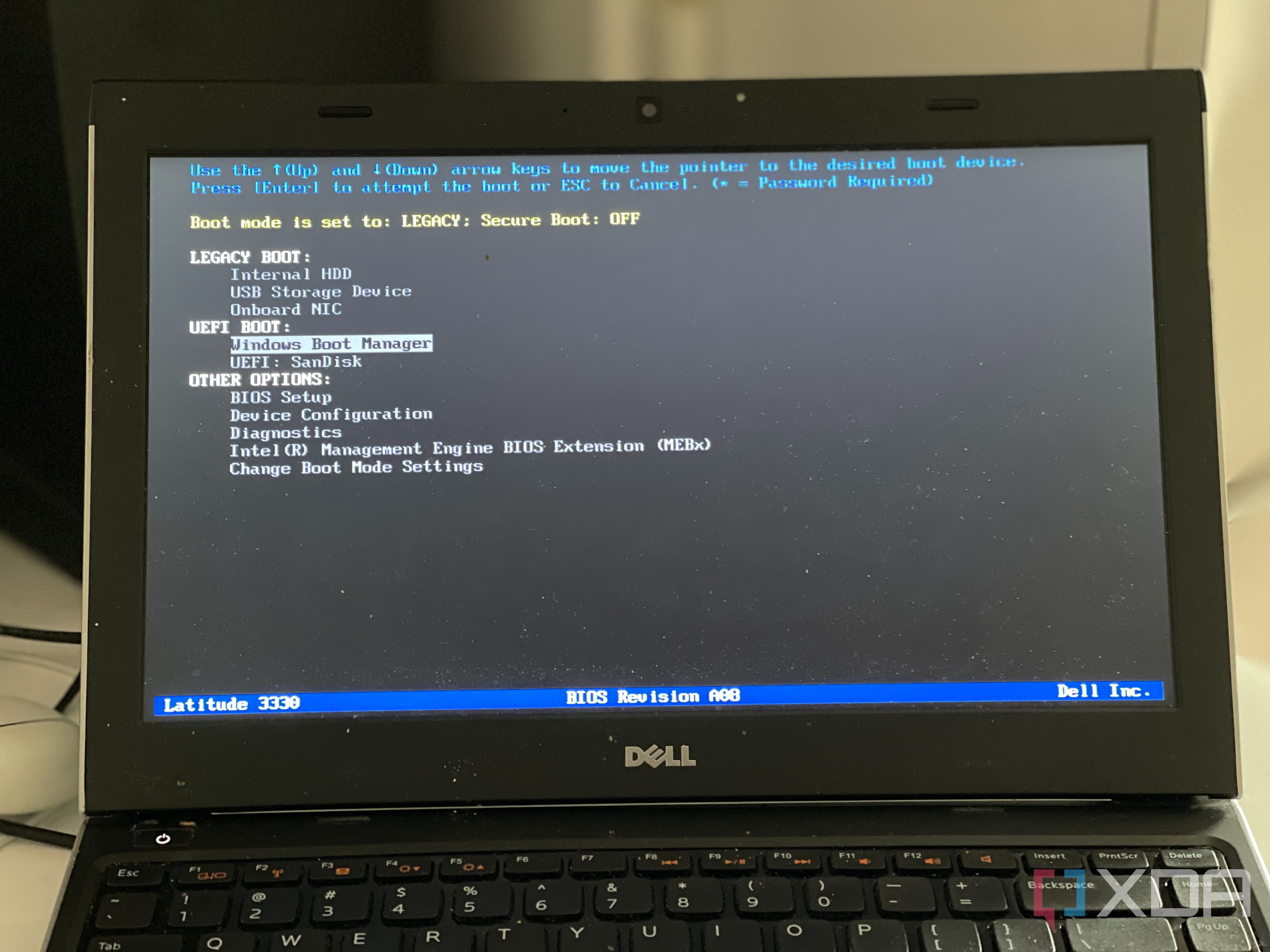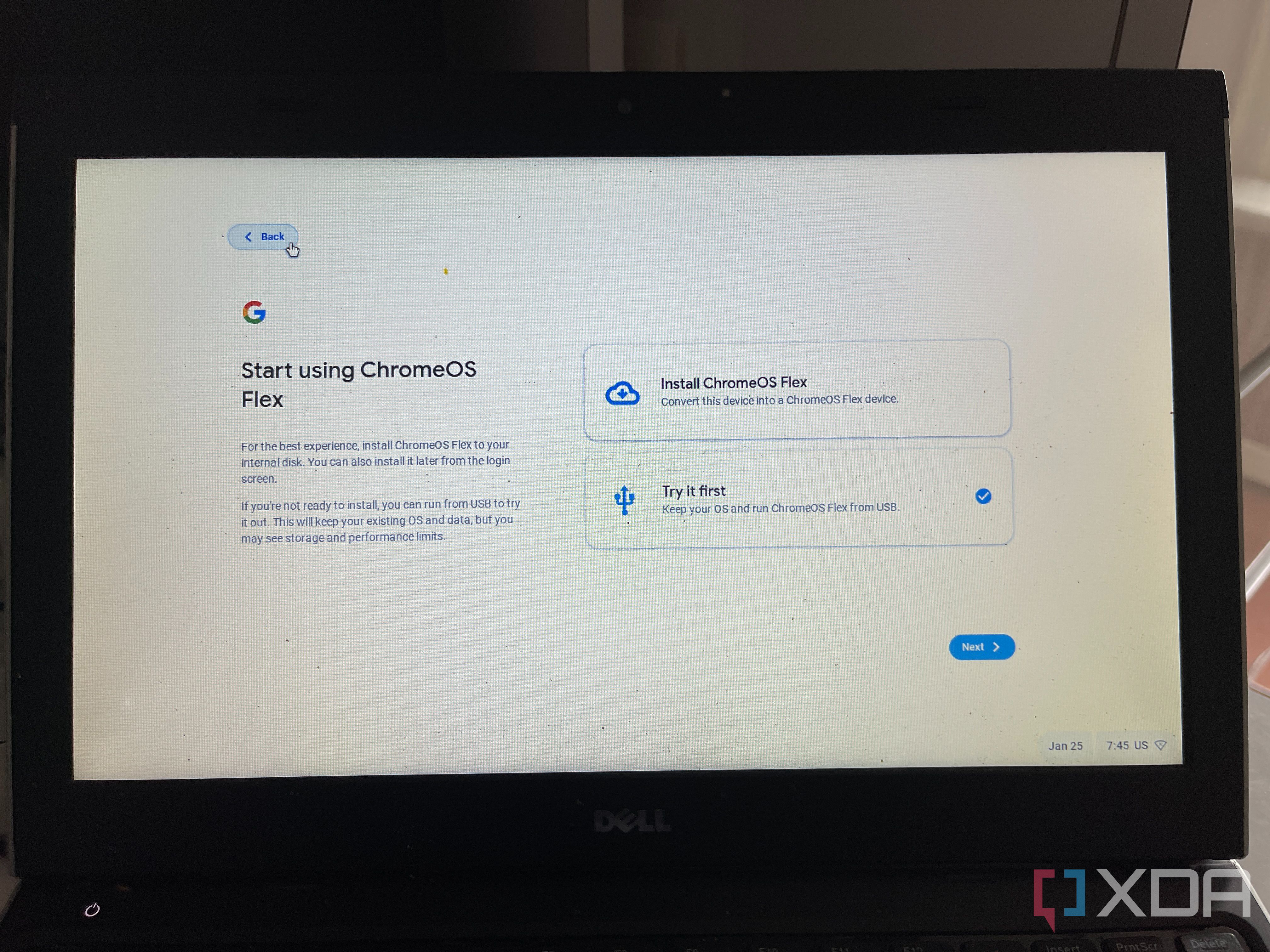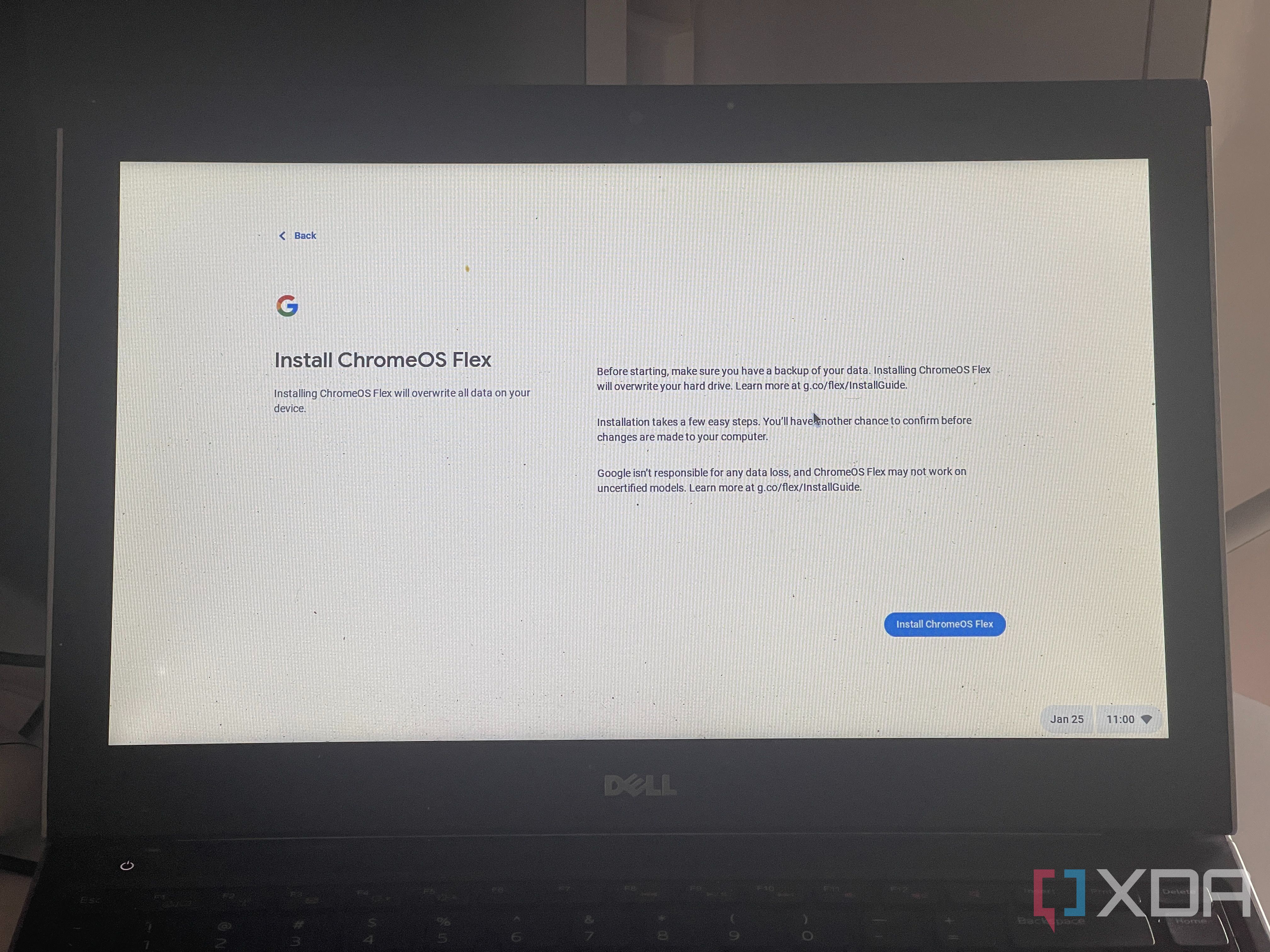Do you have an old laptop running an unsupported version of Windows or macOS somewhere in your home? Are you an IT admin looking to recycle much older laptops for use within your organization? If you said yes to any of those questions, then ChromeOS Flex is a great operating system for that device.
Instead of throwing away that laptop and turning it into e-waste, you can bring it back to life and enjoy secure everyday web browsing on it by installing Google’s newest free operating system, ChromeOS Flex.
ChromeOS Flex is similar to regular ChromeOS in that it is a lightweight, efficient, cloud-first operating system. However, the difference is that it is certified to run on thousands of Windows and Mac-powered systems. Another difference? The operating system is powered by the Chrome web browser but lacks features like support for Android apps. Still, it’s a solid no-nonsense operating system for older devices that now run unsupported versions of Windows like Windows 7, or Windows 8.1.
While older devices are the target, you can even run ChromeOS on modern devices, too. This is so that you can try out the Chromebook experience and get a feel for ChromeOS before buying a real Chromebook device. So if we’ve piqued your curiosity, here’s how you can install ChromeOS Flex today on your device.
What you’ll need
- A Windows or Mac system to create a ChromeOS Flex Installer: You’ll need a PC or Mac different from the one you’re installing ChromeOS Flex on to download the ChromeOS Flex operating system and create a USB installer for it.
- Access to the Chrome Web Store: You need a browser that works with the Chrome Web Store to install the Chromebook Recovery Utility and download ChromeOS Flex. Google Chrome, Microsoft Edge, Vivaldi, and even Opera are a few examples.
- A USB drive that’s 8GB or more: You need this USB drive to create an installation media for ChromeOS Flex. A USB 3.0 drive is preferred as it can speed up the installation process.
- An old (or not) PC or Mac: Naturally, you need an old laptop or Mac to try ChromeOS Flex on. ChromeOS Flex runs on thousands of different systems, and a full list of certified models is available through Google. Most older PCs from 2010 onwards should run ChromeOS just fine. The bare minimum requirement is an Intel or AMD CPU, 4GB of RAM, and 16GB of storage.
- Access to the BIOS on your old laptop: Access to the BIOS on your old laptop is needed so you can boot from the ChromeOS Flex USB installer that you create. Check that it isn’t password locked before you begin the installation process.
Note that we’re using a Dell Latitude 3330 in this guide. The Windows 7-powered system was released in 2013 and has an Intel Core i3-3217U CPU, along with 8GB of RAM, and a 256GB HDD. You can check if your laptop can run ChromeOS Flex by referencing Google’s certified models list.
Step 1: Install the Chromebook Recovery Utility on your primary PC or Mac
To begin the process of installing ChromeOS Flex, you’ll need to head over to a working PC or Mac, that’s different from the old laptop that you have on hand. Also, make sure a web browser like Google Chrome, Microsoft Edge, Vivaldi, or Opera is installed on this device, as you’ll need access to the Chrome Web Store, too to add a specific extension.
- Open your web browser of choice that works with the Chrome Web Store.
- Click here to go to the Chromebook Recovery Utility.
- Click Add to Chrome.
- Click Add Extension.
Once the extension is installed, make sure it is turned on and enabled. For Chrome, click the Extensions button in the menu bar, and choose Manage Extensions. You’ll want to make sure that the toggle switch is on Chromebook Recovery Utility it is to the right.
Step 2: Create a ChromeOS Flex USB installer
In this second step, you’ll be creating a USB installer for the operating system, so make sure you also have the USB drive handy. Plug it into your PC or Mac and jump into the steps below.
- Launch the Chromebook Recovery Utility Extension from the menu bar in your web browser of choice.
- Click Get started.
- Click select a model from a list.
- Under Select a manufacturer, choose Google ChromeOS Flex.
- Under Select a product select ChromeOS Flex.
- Click Continue.
- Under Select the media you’d like to use, please choose the USB drive you inserted into your PC or Mac
- Click Continue.
- Confirm the drive is correct and click Create now.
- Wait for the installer to complete.
The process of creating the USB installer can take as long as 20 or 30 minutes. Be patient and wait will it work its magic.
Step 3: Boot your old laptop from the ChromeOS Flex USB installer
In this third step, you’ll have to boot your old laptop from the ChromeOS Flex USB installer that you just created. Again, please ensure that you have access to the BIOS on this laptop, as you need it to boot from USB.
- Make sure the old laptop you want to run ChromeOS Flex on is turned off.
- Insert the USB drive into the device.
- Turn on the laptop, and immediately press the boot key. Usually, it’s F12, but the table below shows which button or button combination you might have to press. In our case, it is F12.
Manufacturer
Boot key
Acer
F2
Apple
Hold Option (next to the ⌘ key)
Asus
Del
Dell
F12
Gateway
F1
HP
F9
Intel
F2
Lenovo
F12
Toshiba
F2 or F12
Microsoft
Boot from USB—Hold the volume-down button
Other
Try pressing Escthe F1–F12 keys, or Enter
- If the above boot keys do not work, try going into the BIOS to set a temporary boot device under the boot tab. You can look up which key combination you need to use for this by consulting your laptop manufacturers’ online guides. Usually, it is either Enter or Esc.
- Look for the USB drive you created earlier in the list. In our example, it is labeled as UEFI: SanDisk.
- Use the arrow keys to move down to select it, and then press the Enter button on your keyboard.
Step 4: Try out ChromeOS Flex first
After you choose to boot from the USB Drive with ChromeOS Flex, we highly suggest you try out ChromeOS Flex on your old laptop before officially installing it. You’ll be running ChromeOS Flex off the USB drive, with no impact on your main operating system. This gives you the chance to confirm that the sound, keyboard, trackpad, screen brightness, and speakers all work right before you commit to a final installation.
- Click on the blue Get started button
- If you get a prompt for ChromeVox, click the No, continue without ChromeVox button (unless you need a screen reader).
- Click the Try it first option on the screen.
- Sign in to a Wi-Fi network.
- Choose the Browse as Guest option at the bottom of the screen.
- Agree to the terms and conditions, then click Accept and continue.
Your screen will go blank for a moment, and then you’ll see a Chrome browser open. Feel free to go to YouTube.com or another website to confirm your Wi-Fi card is working. Then, perform tests on the audio, screen brightness buttons, trackpad, and keyboard. If everything seems right you can exit the guest mode by clicking the date and time area to the right of the screen and choosing Exit guest.
Step 5: Install ChromeOS Flex
If you’re satisfied with how ChromeOS Flex runs on your device, you can now officially install it. After completing the previous step, you should have been taken back to the Who’s using this Chromebook? screen Ignore that for now and jump to the steps below.
- Choose the Install ChromeOS Flex option at the bottom of your screen.
- Read and agree to the warnings. Keep in mind, you’ll lose all your data on your system.
- Click the Install ChromeOS Flex option
- In the pop-up click the blue Install button
Keep your laptop plugged in and don’t turn it off. Depending on the age of your computer, it could take a while to fully install ChromeOS Flex. In our case, the installation took about 30 minutes, due to the older HDD inside our system. You’ll know when the installation is complete as the system will automatically reboot on its own. You can then follow the instructions on the screen to sign in to a Google Account and set up your device.
After installing the OS on my Dell Latitude 3330, I got a much better experience than when it was running Windows 7. The laptop boots much faster, and the Chrome web browser is much more responsive as new tabs no longer have a delay when loading. Even the battery life is slightly better, as after using the device for work, it lasted me 1.5 hours, instead of the 45 minutes it had in the past. I do have many laptops lying around my house that I already use on a daily basis, but with ChromeOS Flex on this Dell Latitude, I basically gave it a second life and might come back to using it in the future just for fun.






